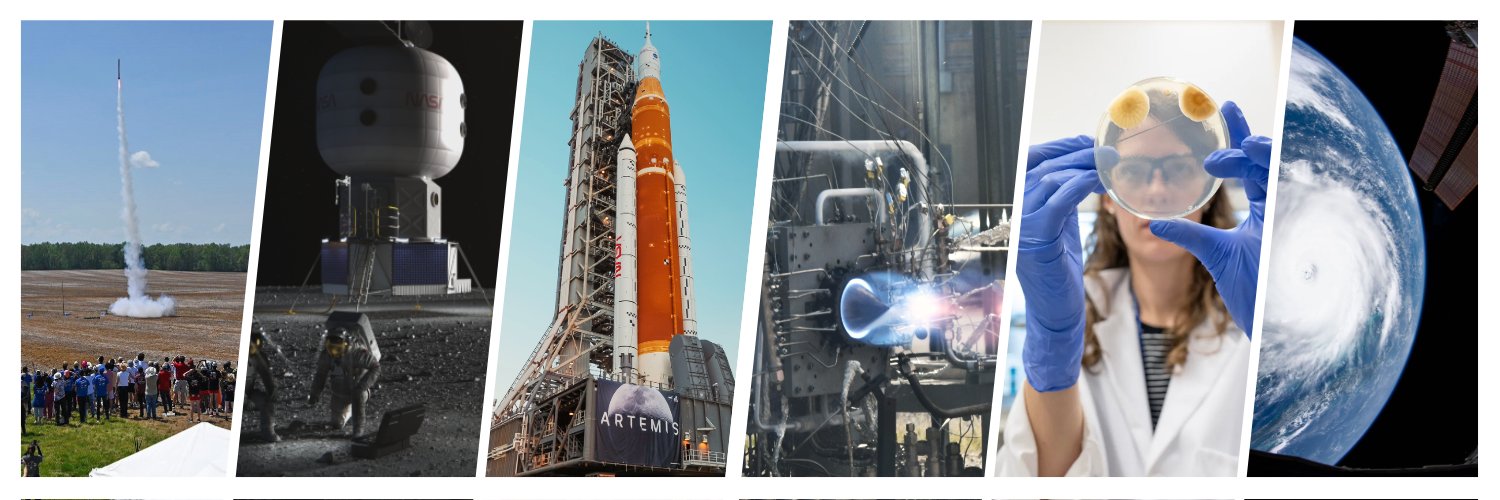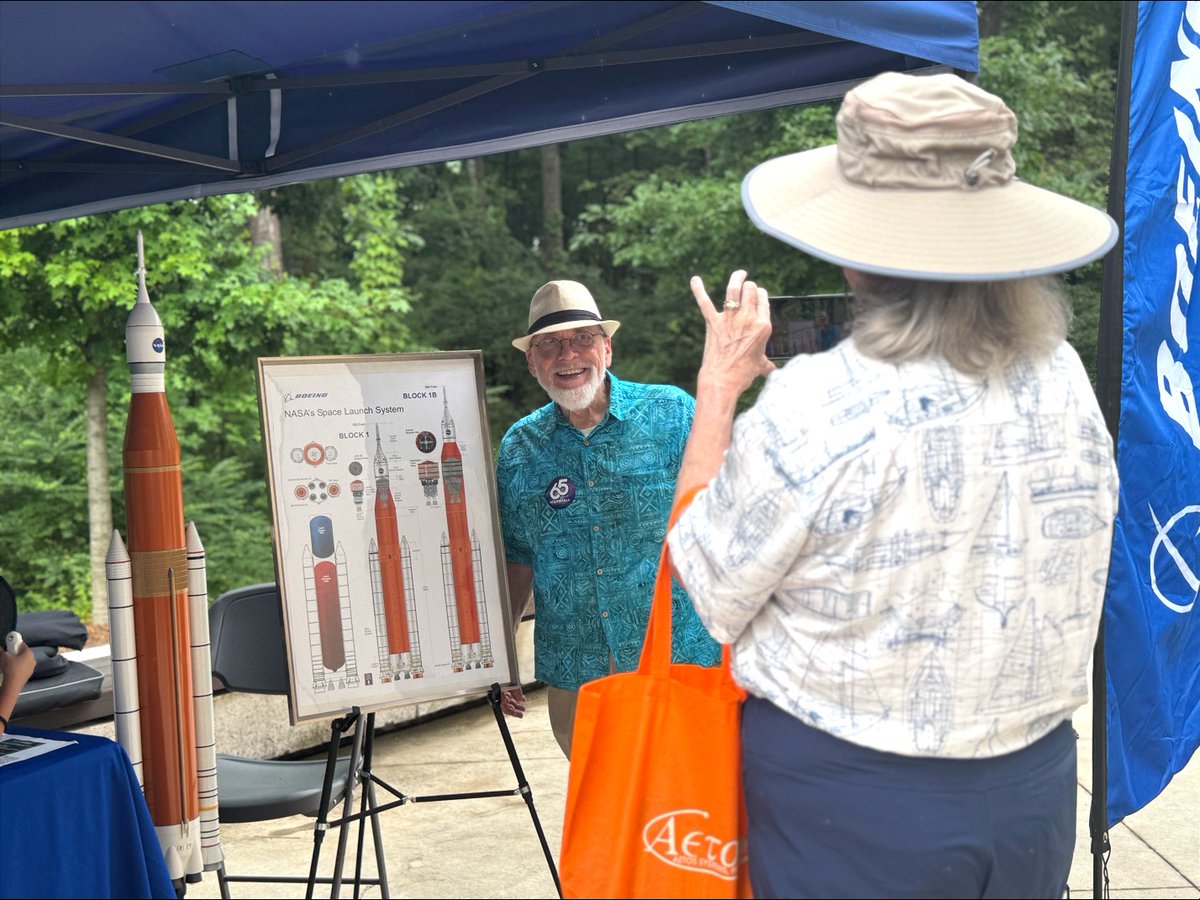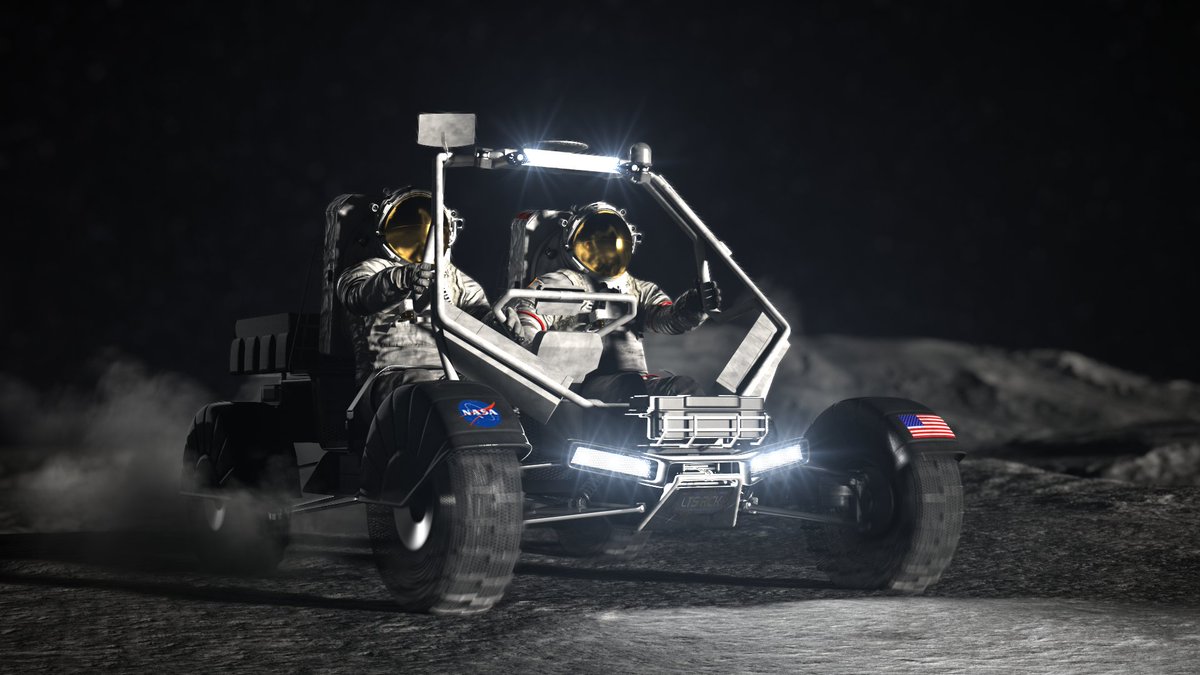
NASA Marshall
@NASA_Marshall
#NASAMarshall delivers NASA's most vital propulsion systems, launch vehicles, cutting-edge science, and more. Verification: http://nasa.gov/socialmedia
Celebrating another trip around the Sun! 🎂 On July 19, we celebrated our 65th with our #NASAMarshall team members, families, partners, and “Rocket City” residents. Read about our 65-year legacy at go.nasa.gov/45ksVGP




Intermediate-mass black holes are often invisible to us because they have to be caught in the act of foraging in order to be found. Luckily, we have two outstanding telescopes that have teamed up to catch a new possible example of this rare class of black holes. 🔗…

Since its launch in 1990, @NASAHubble has changed our fundamental understanding of the @NASAUniverse. How does Hubble work, what makes it an engineering marvel, and what’s in store? Find out in this episode of Small Steps, Giant Leaps 🎙️ go.nasa.gov/4kSwx7u

Watch as teams at #NASAMichoud move a liquid oxygen tank for the @NASAArtemis III mission. 🏗️ The massive hardware will form part of the SLS rocket's core stage. Seen here from earlier this month, it was positioned into a production cell in preparation for the next phase of…
Need to model how materials behave in extreme heat and pressure? 🔥 Check out this downloadable software born from space exploration: go.nasa.gov/3TQb6ZO Learn more in the new NASA Software Catalog!

#OTD in 1969, the first humans stepped foot on the Moon. Four days prior, the Saturn V rocket, developed and managed by #NASAMarshall, launched the Apollo 11 crew on their historic mission.

That concludes our 65th Anniversary Celebration at The Orion Amphitheater. But, #NASAMarshall is celebrating our anniversary all year long, so learn more about our 65-year legacy at nasa.gov/marshall65

T-1 hour until we kick off our Marshall 65th Anniversary Celebration! #NASAMarshall and our partners will be here at the Orion Amphitheater from 12-5 p.m. CT. We hope to see you soon!

Teams at NASA's Michoud Assembly Facility recently lifted the Artemis III liquid oxygen tank into a vertical position. Technicians will now be able to rappel inside and complete internal assembly. This tank is one of five pieces that make up the Space Launch System core stage.
You might think it would be easy to keep things cold in space, but that's not the case when it comes to preserving ultra-cold propellants during space travel. Teams at #NASAMarshall are currently testing an innovative approach to achieve zero boiloff storage of liquid hydrogen:…




Registration is open for the 2025 NASA #SpaceApps Challenge! 🌍🚀💫 Join the largest annual global hackathon, choose from 450+ Local Events, and use open data from #NASA & 14 Space Agency Partners. Register today: bit.ly/3TwZnzl
Honey, we shrunk the planet! 🪐 TOI 1227 b, a "baby" exoplanet, is being bombarded by intense X-rays from its host star—so much so that it’s shrinking. Using @chandraxray, scientists determined that this planet will go from the size of Jupiter down to a small, barren world.…

Launch Window? Scrub? Nope, it’s not spring cleaning — it’s rocket science! 🚀 In this episode of “Nerdy Words,” it’s all about the timing. We’re breaking down the lingo behind the launch pad to learn how NASA’s SLS (Space Launch System) navigates the countdown clock. 🕰️
Scientists have discovered an infinity-shaped galaxy that shows a supermassive black hole in between two rings of stars and gas. Not only is finding a black hole that’s not in the nucleus of a galaxy unusual, but so is the story of how it may have gotten there. 🔗👇…

✨ A cosmic lighthouse just revealed its secrets! Thanks to new observations from #NASAIXPE and other telescopes, scientists found that X-rays from the rare pulsar system J1023 do not come from the star itself, but the pulsar wind. 🌬️ READ MORE >> go.nasa.gov/4kEHauI

It's been 9 years of studying Jupiter - and its rings and moons - for the #JunoMission. 🎉 The Juno spacecraft, which entered orbit around Jupiter on July 4, 2016, is the first explorer to peer below the planet's dense clouds to answer questions about the gas giant itself and…

NASA has selected three instruments to travel to the Moon, with two planned for integration onto an LTV (Lunar Terrain Vehicle) and one for a future orbital opportunity. Read about them here🔗 go.nasa.gov/4lPlPQc
